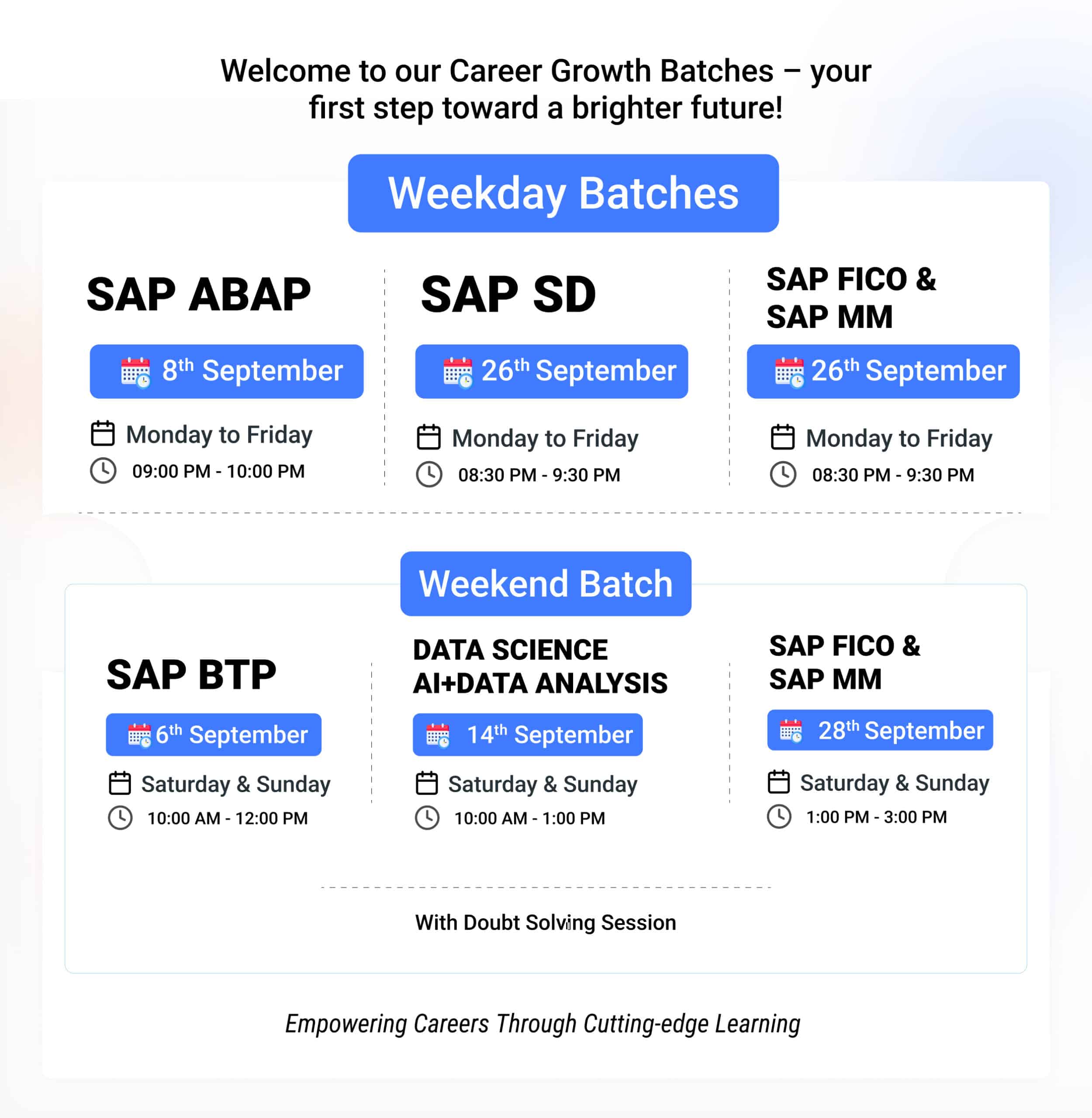SAP Finance and Controlling (FICO)
 is a middle module in SAP ERP wherein FI stands for Financial Accounting and CO stands for Controlling. SAP FICO module could be very strong and covers all monetary strategies accompanied in numerous industries.
is a middle module in SAP ERP wherein FI stands for Financial Accounting and CO stands for Controlling. SAP FICO module could be very strong and covers all monetary strategies accompanied in numerous industries.
SAP FICO machine permits you to centrally song monetary accounting statistics inside an worldwide framework of more than one companies, languages, currencies, and charts of money owed. SAP FICO module specifically offers with crucial factors which includes constant assets, accrual, bank, coins journal, inventory, tax accounting, popular ledger, money owed receivable, money owed payable, rapid near functions, monetary statements, parallel valuations, grasp statistics governance, and the like.
SAP Finance and Controlling (SAP FI) is primarily based totally on natural accounting concepts which gives middle accounting and reporting skills and guarantees the maximum updated balances and reporting accuracy thru entire integration among the General Ledger (GL) and the Accounts Receivable (AR) and Accounts Payable (AP) and Asset Accounts (AA). Its bendy configure as in keeping with us of a particular requirements of Reporting, Tax and Depreciation.
The SAP FICO module is the middle module in SAP ERP it integrates with different modules which includes Controlling, Sales and Distribution, Purchasing and Materials Management and Human Resources. Document transactions taking place inside those modules generate account postings through account dedication tables. Reports of this Modules are person for outside motive which includes Balance sheet and Profit and Loss of every monetary yr.
SAP FI/CO module is the spine of SAP accounting because it statistics monetary transactions of actions of goods, offerings and all different commercial enterprise transactions among the business enterprise and its customers & vendors. It may be without problems included with different SAP modules specifically MM, SD, PS, PP, HCM, Payroll, SuccessFactors, and so on.
This SAP FICO Certification direction supplied via way of means of Uplatz prepares you for the legit SAP FICO Certification exam. With SAP FICO Certification direction a main business enterprise may want to take in you. Based for your enjoy and your purposeful information, you’ll begin as a representative or benefit lateral access as a Project Manager.
This Consultant level (additionally consists of End person) schooling on SAP Financial Accounting (FI) and SAP Controlling (CO) method supplies the expertise and information experts want for higher control of finance accounting and reporting in enterprises.
Course Objective
1• Learn Complete Configuration of SAP FICO & End-User Activities little by little with Proper Notes
2• Learn Data Migration Tool -LSWM
3• Understand How ABAP User-Exit might be implemented ( stay implementation finished on this direction)
4• Learn How to Transport Request might be moved in real-time
5• Learn Complete Year End Activities in SAP For Finance Module
Course Syllabus
Introduction:
Introduction to ERP
Introduction to SAP
Part 1: Enterprise Structure:
1. Definition of business enterprise
2. Definition of business enterprise code
3. Assignment of a business enterprise to business enterprise code
4. Definition of commercial enterprise area
Part 2: Financial Accounting Basic Settings
1. Definition of monetary yr version
2. Assignment of monetary yr version to business enterprise code
3. Definition of posting duration version
4. Assignment of posting duration version to business enterprise code
5. Open and near posting duration
6. Maintenance of area fame variants
7. Assignment of area fame version to business enterprise code
8. Creation of Chart of Accounts
9. Defining Accounts Groups
10.Defining Retained Earnings Account
11. Definition of tolerance corporations for GL money owed
12. Definition of tolerance corporations for employees
13. Assignment of tolerance corporations to users
14. Taxes on Sales & Purchases (input & output)
15. Defining record type & range ranges
PART 3: General Ledger Accounting:
1. Creation of General Ledger Master (with and with out reference)
2. Display/Change/Block/Unblock of popular ledger grasp
3. Document Entry posting ordinary postings and posting with reference
4. Display and alternate of documents
5. Display of GL balances
6. Display GL account line items
7. Parked documents
8. Hold documents
9. Creation of Sample Document postings with pattern documents
10. Reversal of character documents, mass reversal and reversal of reversed record
Month End Provisions –
Open object Management – Full clearing, Partial Clearing and Residual Clearing
Accrual and Deferral documents
Interest calculations on time period loans
PART 4: Accounts Payable
1. Creation of dealer account companies
2. Creation of range tiers for dealer grasp facts
three. Assignment of range tiers to dealer account companies
4. Creation of tolerance organization for vendors
5. Creation of dealer grasp (display/change/block/unblock of dealer grasp)
6. Posting of dealer transactions (bill posting, charge posting, credit score memo)
7. Display Vendor balances and G/L Balances
8. Configuration Settings for enhance bills to Vendors (down charge)
9. Clearing of down charge towards invoices (unique GL transactions)
10. Posting of partial Payment & Residual Payment
11. Creation of charge phrases,
12. Creation of residence banks and account ids.
13. Creation of test masses and Creation of void reasons
14. Maintenance of test register
15. Display test register
16. Cancellation of unissued checks
17. Cancellation of issued checks
18. posting of buy returns
19.Configuration of computerized charge program
20. Defining correspondence & birthday birthday celebration assertion of accounts
PART 5: Accounts receivable:
1. Creation of patron account companies
2. Creation of range tiers for patron grasp facts
three. Assignment of range tiers for patron account companies
4. Creation of tolerance organization for customers
5. Creation of patron grasp (display/change/block/unblock of dealer grasp)
6. Posting of patron transactions (income bill posting, charge posting, debit memo)
7. Display patron balances and G/L Balances
8. Configuration Settings for enhance charge from customers (down charge)
9. Configuration settings for phrases of charge to customers
10. Configuration of settings for dunning
11. Generating the dunning letters
12. Defining correspondence and birthday birthday celebration assertion of accounts
13. Bills of exchange
14.Posting of income returns
PART 6: Asset Accounting:
1. Copy reference chart of depreciation
2. Assignment of the chart of depreciation to agency code
three. Creation of 0% tax codes for income and purchases
4. Defining account determination
5. Definition of display screen format rules
6. Definition of range tiers for asset grasp
7. Creation of asset classes
8. Integration with General Ledger & Posting rules
9. Defining Depreciation key
10. Definition of multilevel methods
11. Definition of duration manipulate methods
12. Creation of major asset grasp facts
13. Creation of sub-asset grasp facts
14. Posting the transactions for Acquisition of constant belongings
15. Depreciation run and Asset explorer
16. Sale of constant belongings – with the patron and with out the patron
17.Transfer of belongings
18.Impairment of belongings
19.Scrapping of belongings,
Line object Settlement of belongings beneathneath creation of capital paintings in progress
PART 7: CONTROLLING
7.1. Basic settings for controlling
a) Defining Controlling Area
b) Defining Number tiers for Controlling Area
.c) Maintain Planning Versions
7.2 Cost detail accounting:
a) Creation of number one fee factors from the monetary accounting area
b) Creation of number one fee factors from controlling area
c) Display of fee detail grasp facts
d) Change fee detail grasp facts
Primary fee detail categories
Secondary fee detail categories
7.three Cost Center Accounting:
a) Defining Cost Center Standard Hierarchy
b) Creation of Cost Centers and fee middle companies
c) Display fee middle grasp facts
d) Change fee middle grasp facts
e) Creation of fee middle companies
f) Posting to fee facilities
g) Reposting of co line items
h) Repost of Costs
i) Planning for fee facilities
.j) Cost middle reviews
PART 8: INTERNAL ORDERS
1. Define the sector popularity organization for statistical orders
2. Creation of Primary fee detail
three. Creation of inner order grasp facts for statistical orders
4. Display inner order grasp facts
5. Change inner order grasp facts
6. Postings to inner orders
7. Planning for inner orders
8. Report of Variance evaluation for inner orders
9. Real orders
10. Creation of actual inner orders
11. Posting of enterprise transaction to actual orders
12. Definition of allocation structures
13. Definition of agreement profiles
14. Definition of making plans profiles
15. Define range tiers for Settlement files of actual inner orders
16. Define range tiers for controlling files.
17. Budgeting and availability manipulate
18. Maintain range tiers for budgeting
19. Define tolerances for availability manipulate
20. Specification of exempt fee factors from availability manipulate
21. Maintenance of price range manager
Part 9:Profit Center Accounting:
1. Basic Settings for Profit Center Accounting
2. Creation of Dummy Profit Centers
three. Maintenance of manipulate parameters for real postings
4. Maintaining making plans variations for earnings facilities
5. Maintaining the range tiers for earnings middle files
6. Creation of earnings middle grasp facts
7. Display of earnings middle grasp facts
8. Changing the earnings middle grasp facts
9. Assign earnings middle to fee middle for expenditure posting
10. Creation of sales fee factors
11. Automatic Assignment of Revenue factors for Profit Centers
12. Assignment of earnings facilities in fee middle grasp facts
13. Creation of account companies in earnings middle accounting for making plans
14. Planning for earnings and loss account items
15. Posting of transactions into earnings facilities
16. Generating the variance reviews for earnings and loss account items
PART 4: Accounts Payable
1. Creation of provider account businesses
2. Creation of variety degrees for provider draw close records
3. Assignment of variety degrees to provider account businesses
4. Creation of tolerance employer for vendors
5. Creation of provider draw close (show/change/block/unblock of provider draw close)
6. Posting of provider transactions (invoice posting, fee posting, credit score rating memo)
7. Display Vendor balances and G/L Balances
8. Configuration Settings for beautify payments to Vendors (down fee)
9. Clearing of down fee closer to invoices (particular GL transactions)
10. Posting of partial Payment & Residual Payment
11. Creation of fee terms,
12. Creation of house banks and account ids.
13. Creation of check hundreds and Creation of void reasons
14. Maintenance of check register
15. Display check register
16. Cancellation of unissued checks
17. Cancellation of issued checks
18. posting of purchase returns
19.Configuration of automated fee program
20. Defining correspondence & birthday celebration statement of accounts
PART 5: Accounts receivable:
1. Creation of customer account businesses
2. Creation of variety degrees for customer draw close records
3. Assignment of variety degrees for customer account businesses
4. Creation of tolerance employer for customers
5. Creation of customer draw close (show/change/block/unblock of provider draw close)
6. Posting of customer transactions (profits invoice posting, fee posting, debit memo)
7. Display customer balances and G/L Balances
8. Configuration Settings for beautify fee from customers (down fee)
9. Configuration settings for terms of fee to customers
10. Configuration of settings for dunning
11. Generating the dunning letters
12. Defining correspondence and birthday celebration statement of accounts
13. Bills of exchange
14.Posting of profits returns
PART 6: Asset Accounting:
1. Copy reference chart of depreciation
2. Assignment of the chart of depreciation to enterprise code
3. Creation of 0% tax codes for profits and purchases
4. Defining account determination
5. Definition of show display layout rules
6. Definition of variety degrees for asset draw close
7. Creation of asset classes
8. Integration with General Ledger & Posting rules
9. Defining Depreciation key
10. Definition of multilevel methods
11. Definition of period control methods
12. Creation of essential asset draw close records
13. Creation of sub-asset draw close records
14. Posting the transactions for Acquisition of regular property
15. Depreciation run and Asset explorer
16. Sale of regular property – with the customer and without the customer
17.Transfer of property
18.Impairment of property
19.Scrapping of property,
Line item Settlement of property beneathneath advent of capital artwork in progress
PART 7: CONTROLLING
7.1. Basic settings for controlling
a) Defining Controlling Area
b) Defining Number degrees for Controlling Area
.c) Maintain Planning Versions
7.2 Cost element accounting:
a) Creation of primary charge elements from the financial accounting area
b) Creation of primary charge elements from controlling area
c) Display of charge element draw close records
d) Change charge element draw close records
Primary charge element categories
Secondary charge element categories
7.3 Cost Center Accounting:
a) Defining Cost Center Standard Hierarchy
b) Creation of Cost Centers and charge center businesses
c) Display charge center draw close records
d) Change charge center draw close records
e) Creation of charge center businesses
f) Posting to charge centers
g) Reposting of co line items
h) Repost of Costs
i) Planning for charge centers
.j) Cost center opinions
PART 8: INTERNAL ORDERS
1. Define the arena recognition employer for statistical orders
2. Creation of Primary charge element
3. Creation of internal order draw close records for statistical orders
4. Display internal order draw close records
5. Change internal order draw close records
6. Postings to internal orders
7. Planning for internal orders
8. Report of Variance assessment for internal orders
9. Real orders
10. Creation of real internal orders
11. Posting of organisation transaction to real orders
12. Definition of allocation structures
13. Definition of settlement profiles
14. Definition of planning profiles
15. Define variety degrees for Settlement documents of real internal orders
16. Define variety degrees for controlling documents.
17. Budgeting and availability control
18. Maintain variety degrees for budgeting
19. Define tolerances for availability control
20. Specification of exempt charge elements from availability control
21. Maintenance of fee variety manager
Part 9: Profit Center Accounting:
1. Basic Settings for Profit Center Accounting
2. Creation of Dummy Profit Centers
3. Maintenance of control parameters for actual postings
4. Maintaining planning versions for profits centers
5. Maintaining the variety degrees for profits center documents
6. Creation of profits center draw close records
7. Display of profits center draw close records
8. Changing the profits center draw close records
9. Assign profits center to charge center for expenditure posting
10. Creation of income charge elements
11. Automatic Assignment of Revenue elements for Profit Centers
12. Assignment of profits centers in charge center draw close records
13. Creation of account businesses in profits center accounting for planning
14. Planning for profits and loss account items
15. Posting of transactions into profits centers
16. Generating the variance opinions for profits and loss account items
) How capital WIP (Work In Process) and Assets accounted for in SAP?
‘Capital WIP’ is called Assets below production in SAP and is represented below particular asset class. Depreciation isn’t charged below ‘Capital WIP’ generally. The fee incurred on constructing a capital asset may be booked to an ‘inner order’ and thru the agreement procedures, and may be published onto an ‘Asset Under Construction’.
What are the most important additives of Chart of Accounts?
The most important additives of Chart of Accounts are:
a) Chart of account key
b) Name
c) Maintain Language
d) Length GL account variety
e) Controlling Integration
f) Consolidation-Group chart of money owed
g) Block indicator
What is credit score managing location in SAP?
To immune your corporation from the chance of horrific money owed and more than one remarkable receivable, you could set a credit score restrict on your client through the usage of credit score manage location in SAP. With the assist of SAP, you could block the deliveries in your client primarily based totally at the credit score restrict and the money owed receivable stability of their account that is maintained through you.
How are you able to create Credit Control Area in SAP?
By the usage of transaction code OB45 or course you could create Credit Control Area in SAP
SPRO> business enterprise structure >preserve structure>definition>monetary accounting>preserve credit score manage location after which input the subsequent description
a) Update
b) Name of the credit score manage location in SAP
c) Currency
d) Description
e) Credit Limit
f) Risk Category
g) Fiscal Variant
h) Rep organization
What is posting duration editions?
In economic 12 months posting duration is a duration for which the transactions figures are updated. The posting duration editions in SAP is responsible to manipulate which Accounting duration is open for posting and guarantees that the closed durations stay balanced.
Explain in easy phrases what’s subject popularity and what does it manage?
Field popularity organization is a collection configured in FSV (Field Status Variant) to preserve subject popularity for G/L (General Ledger) money owed. It controls which subject must suppress, display, elective and required.
What is short-quit economic 12 months?
A short-quit economic 12 months consequences while you convert from a everyday economic 12 months to a non-calendar economic 12 months, or different manner around. This sort of alternate occurs while an business enterprise will become a part of a brand new co-company organization.
What is an account organization and in which it’s far used?
To manage the facts that wishes to be entered on the time of the introduction of a grasp report an account organization is used. Account organization exist for the definition of GL account, Customer Master and Vendor.
What is the motive of “Document type” in SAP?
The motive of ” Document type” in SAP is
a) Number variety for files are described through it
b) Types of money owed that may be published are managed through it, e.g Assets, Vendor, Customer, Normal GL account
c) It is used for the reversal of entries
Is enterprise location at corporation code degree?
No. Business location is at patron degree because of this that different corporation codes also can be published to the equal enterprise location.
In SAP, Customer and Vendor code are saved at what degree?
The Vendor and Customer codes are saved on the patron degree. It manner that through extending the corporation code view any corporation code can use the client and dealer code.
How are tolerances for bill verification described?
Tolerance determines whether or not the payable locations matching or tax maintain at the bill. The following are the times of tolerance may be described for Logistic Invoice Verification.
a) small differences
b) Moving common rate variances
c) Quantity variances
d) Price variances
What is a rustic Chart of Accounts?
Country Chart of Accounts includes G/L (General Ledger) money owed had to meet the country’s criminal requirements.
What is APP in SAP FICO?
APP stands for ‘Automatic Payment Program’; it’s far a device supplied through SAP to corporations to pay its carriers and customers. APP equipment assist to keep away from any errors taken vicinity in posting manually. Also, while variety of personnel is extra withinside the corporation, fee thru APP will become extra feasible.
In SAP FICO what are the phrases of fee and in which are they saved?
Payment phrases are created withinside the configuration and decide the fee due date for dealer/client bill.
They are saved at the client or dealer grasp report and are pulled thru onto the client/dealer bill postings. The due date may be modified on every person bill if required.
What are one-time carriers?
In sure corporations, specifically the only managing excessive coins transactions, it isn’t sensible to create new grasp information for each dealer buying and selling partner. One-time carriers permit a dummy dealer code for use on bill access and additionally the facts that is generally saved withinside the dealer grasp.
What are the usual degrees of the SAP fee run?
The following steps are the usual stages of the SAP fee run
a) Entering of parameters (Vendor Accounts, Company Codes, Payment Methods)
b) Proposal Scheduling – the machine proposes the listing of the bill paid
c) Payment reserving- the reserving of the real bills within the ledger
d) Printing of fee forms, for instance cheques
44) In Accounts Receivable, what’s the distinction between the ‘Residual Payment’ and ‘Part Payment’ techniques of allocating coins?
‘Residual fee’ and ‘Part fee’ are the 2 techniques for allocating partial techniques to customers. For instance, a bill for $ hundred is generated, client has paid $70. Now this $70 could be offset and leaving the last stability of $30. With a residual fee, the bill is cleared for the overall cost of $ hundred, and a brand-new bill is generated for the last balance of $30.








